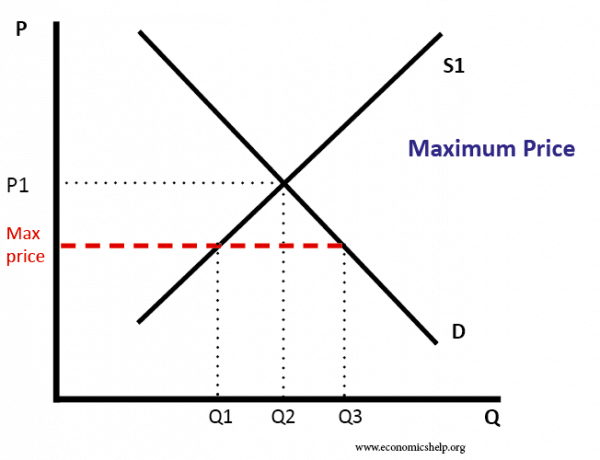When a price floor is set above the equilibrium price quantity supplied will exceed quantity demanded and excess supply or surpluses will result.
Effects of a floor price on market equilibrium.
But if price floor is set above market equilibrium price immediate supply surplus can be observed.
Surplus product is just one visible effect of a price floor.
It s generally applied to consumer staples.
In other words they do not change the equilibrium.
Effect on the market a price floor set above the market equilibrium price has several side effects.
Price floors distort markets in a number of ways.
For example they promote inefficiency.
Consumers find they must now pay a higher price for the same product.
Price floors and price ceilings often lead to unintended consequences.
When a price floor is set above the equilibrium price quantity supplied will exceed quantity demanded and excess supply or surpluses will result.
Price floors prevent a price from falling below a certain level.
At higher market price producers increase their supply.
As a result they reduce their purchases switch to substitutes e g from butter to margarine or drop out of the market entirely.
A price floor also leads to market failure a situation in which markets fail to efficiently allocate scarce resources.
Producers are better off as a result of the binding price floor if the higher price higher than equilibrium price makes up for the lower quantity sold.
Some suppliers that could not compete at a.
The price ceiling is usually instituted via law and is typically applied to necessary goods like food rent and energy sources in order to ensure that everyone has access to them.
If the government sells the surplus in the market then the price will drop below the equilibrium.
When government laws regulate prices instead of letting market forces determine prices it is known as price control.
Consumers are always worse off as a result of a binding price floor because they must pay more for a lower quantity.
This price must lie below the equilibrium price in order for the price ceiling to have an effect.
However price floor has some adverse effects on the market.
A price ceiling is a maximum amount mandated by law that a seller can charge for a product or service.
If price floor is less than market equilibrium price then it has no impact on the economy.
More specifically a price ceiling in other words a maximum price is put into effect when the government believes the price is too high and sets a maximum price that producers can charge.
Remember changes in price do not cause demand or supply to change.




























